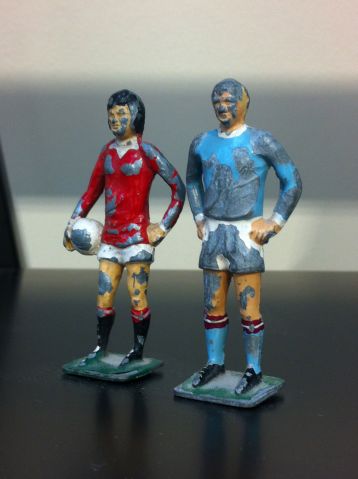Feeling whimsical … sentimental about the past and yet pleased about going forward and progress being made …
I’ve been thinking about my late Nana a lot more than usual over the past few weeks because of the work I’m making. My latest reconfiguration of the ‘Fabric of Life’ into a new work, 20/25 has meant a lot of contact with the fabrics from my Nana’s home, in which she lived for some 70 years. Plus, I’ve retrieved the powder puffs from storage, to be included in the group show, ‘Blusher’ organised and curated by artist Cathy Lomax opening soon.
I wrote this in a post here a couple of weeks ago:
‘I can’t tell you how good it feels to be able to easily access and pull out just about any item out of thousands. This theory was tested just this past week when I referred to my ‘stuff in boxes’ list, all neatly typed, and was able to easily locate a bunch of powder puffs. Well, I say easily – it still involved a lot of shunting around of boxes to get to them, but I knew where they were, which box they were in and that’s a very good start!’
There are a few things mislaid – my collection of beautiful babes in arms photos, for example. I remember I put them in a book somewhere to keep them in a safe place but I have no idea now where that safe place might be. I’m sure they’ll turn up one day – but I’ll quietly obsess about them until they do, I know!
I’ve sifted and sorted through my collections so many times now that it’s inevitable that some sort of order has been achieved and reading back through this blog, it’s amazing to think how much better organised my collected paraphernalia now is. There will always be room for improvement but I know I’ve come along in leaps and bounds in terms of organisation. There was a time when my stuff was in flimsy cardboard boxes – that’s when the vermin got in! – whereas now, everything’s in plastic boxes with lids, so much more protected.
I estimated the other day that there’s probably over £500 worth of boxes in my storage shed – worth way more than their contents, I’m sure! But then, that’s in monetary terms – the emotional value of my collections is way more – priceless, in fact, in so many ways.
The powder puffs I mentioned above are a case in point: on the surface, just a bundle of used items, gathered together, begging the question – and one which I’ve been asked many times over the years- why on earth do I have them and how can they be of any real value?
Very little of what I collect is about monetary value – amongst other things, it’s about love, remembrance, capturing and honouring the past and holding onto a part of people I’ve encountered in my life, some who I’ve loved and lost, and some who are still around, connected in one way or another. It’s also about gathering together things that have simply caught my eye and I like well enough to want to own. I’ve become more discerning in this respect over the years and inevitably, as I’ve changed, so have my choices and taste in what I choose to collect.
But back to the powder puffs and the fact that one of them (pictured above, second on left) belonged to my late Nana brings a whole new significance. I retrieved it from her dressing table when I went with my Mum and sister to start the process of packing up my Nana’s home, following on from her move to a nursing home in the last few months of her life. Nana, widowed young, spent a large part of her life living independently at home and coming from that waste not, want not generation meant that she’d held onto a lot of stuff – especially in the three upstairs bedrooms which over the years, had become increasingly inaccessible to her. I remember both as a child and an adult, being sent upstairs to look for certain items – and was frequently awe struck by Nana’s ability to remember exactly where everything was – ‘six linen table napkins, second drawer on the left in the front bedroom.’
Perhaps it’s this memory that drives me to get my own house in order so that I, too, one day might know where everything is.






